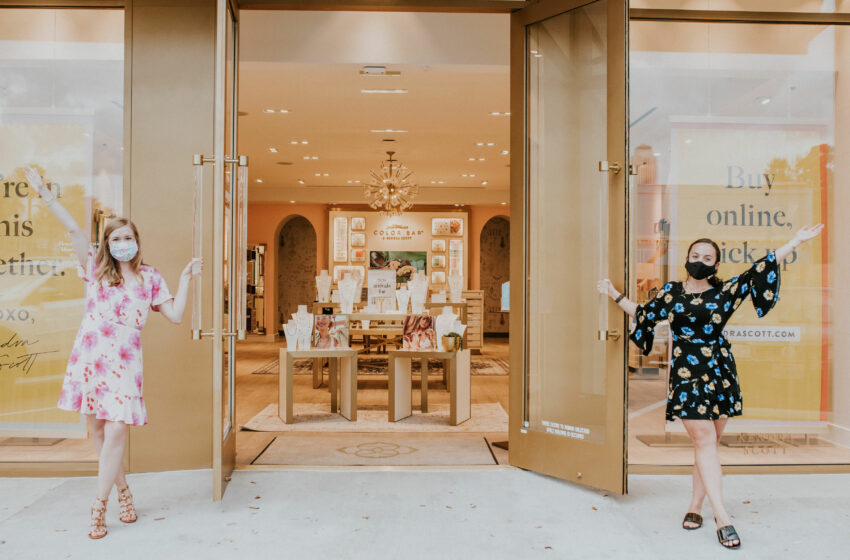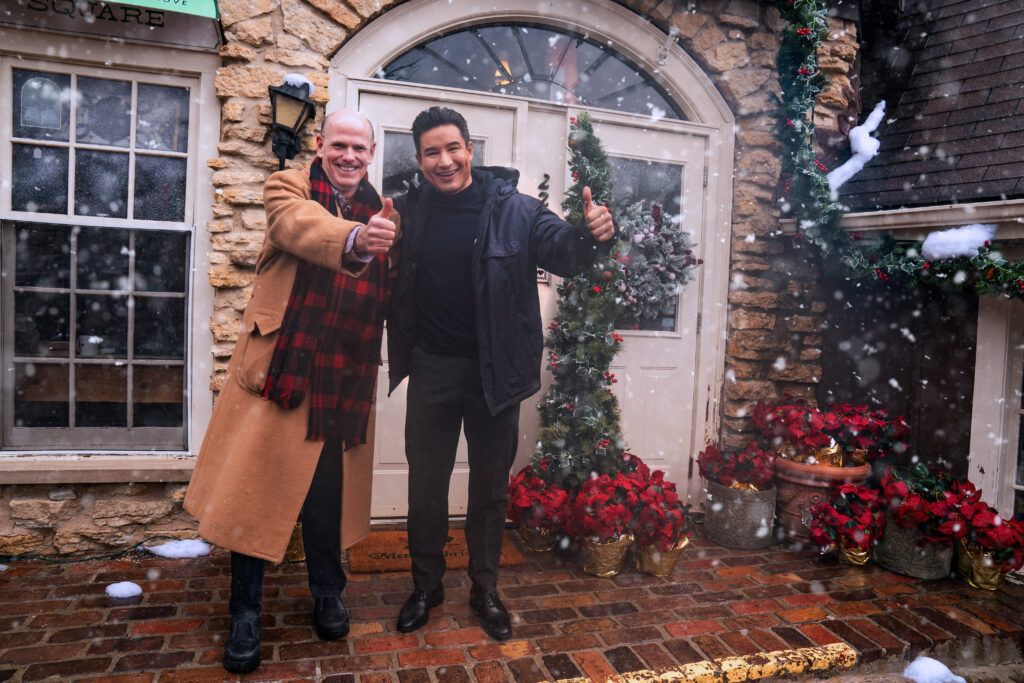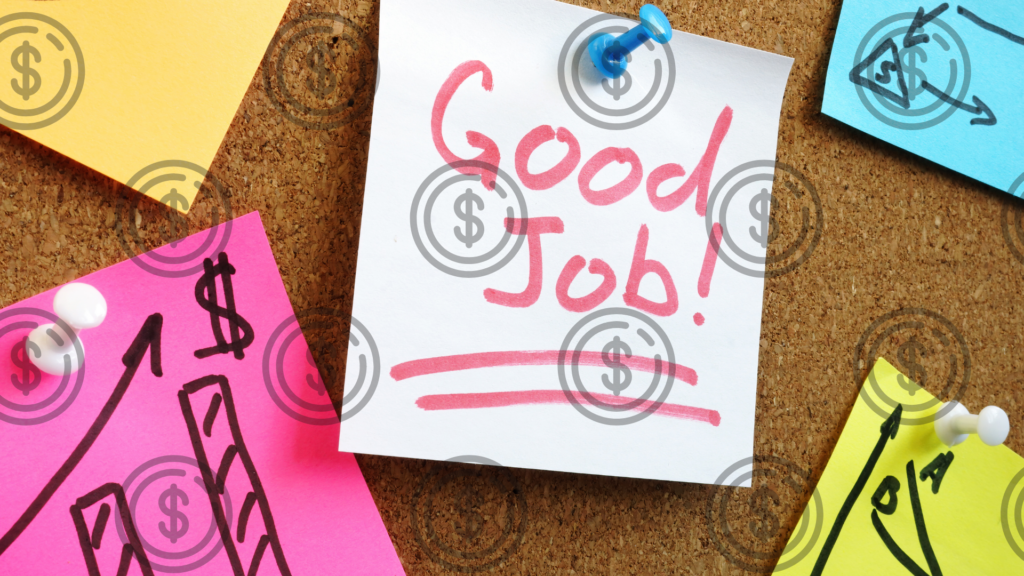Kendra Scott’s Retail Success in the Age of COVID – Prepare, Adapt, or Die

Tom Nolan, President at Kendra Scott, Interviewed by YTexas CEO Ed Curtis
When the pandemic first hit, it was clear to me that some businesses—the ones that were succeeding—had either prepared for this scenario or quickly found a way to adapt to it. As business owners, we are always curious as to how and why some get there, while others do not.
When I was asked to interview a leader at a company that has risen to the top during this crisis, I didn’t need to look too far. If you were like me, you were searching for the industry leaders whose example we could follow through the COVID crisis. Companies like H-E-B and Amazon were prepared—Amazon with a business model that feeds on the need for on-demand delivery, H-E-B with an extremely efficient supply chain that was ready to handle a crisis like this. Others, like retail operations, were not afforded a business model nor a supply chain model that could change on a dime.
However, there were outliers in the retail space who found a way to adapt and overcome. One of those happened to be Kendra Scott. During the early days of the pandemic, I would always see them in the headlines. Whether it was their curbside service or their commitment to philanthropy, it seemed as if they had planned for this. Well, yes and no. While they had long been looking at supply chain efficiency and online experiences for customers, the pandemic was a surprise to them, just like the rest of us.
At the end of the day, Kendra Scott’s success came down to one simple thing: culture. When they had to rally the troops, everyone marched in line. Were they prepared operationally? Yes. Were they investing in future technology? Yes. But what stood out to me in this interview with Kendra Scott president Tom Nolan is that their culture, and loyal customers, are what made it look easy.
—Ed Curtis
Ed: Let’s start with how Kendra Scott as a team and brand has weathered the pandemic. Things seem to be going well. What do you credit that to?
Tom: Our business has reacted remarkably well through this, to the level of being something of an outlier. I’m very proud of that. I would say that two primary aspects of our organization have aided us.
The first is our intense focus on the customer. The customer is our boss, and she drives every decision we make. One of the big obstacles, and priorities, of this pandemic has been preserving the customer experience and maintaining high customer engagement. That will continue to be a priority as we come out of it.
I have never been a part of a company — as a board member or an operator or an employee or a customer — that has the connection we have with our customers. It’s unlike anything I’ve ever seen before. It is multigenerational, it’s rooted in our pillars of family, fashion, and philanthropy, and it’s part of our connection with local communities. Some brands say they prioritize the customer but they don’t act that way. We say it and then we do it. Customer expectations are a hell of a lot higher now than ever before, but I think this time is a great opportunity for brands to grow their connection to customers. Kendra Scott customers have certainly pointed the way for our brand as we dealt with the challenges of this year.
The other factor that’s helped through 2020 is our speed. Kendra and I both move fast, and so does the organization. We’ve been unafraid to make swift decisions, and that’s served us well. For example, we caught supply chain issues coming out of Asia on the early side of things. Months before the pandemic got here, we were talking to our suppliers to make sure we had options in case things got messy. Jumping on that fast put us in a really good place on the supply chain.
We started having conversations about diversifying our supplier network at the turn of 2020. Speed is important to our supply chain too. The faster we can get product turned around, the better. In our business, you have hits — an earring or a necklace or a bracelet that catches fire, so to speak, with customers. Suddenly, everyone wants it. The ability to get back into those products faster at a strong margin is critical.
That’s where our discussions in early 2020 were. Then, as we saw the pandemic starting, the discussions evolved into talking about diversification of country of origin. I like the saying that Noah built the Ark before it started raining. We followed the news and stayed prepared.
When we look back on this time, we’ll see that there were a lot of winners and a lot of losers. I think we’ll see that the companies, big or small, who were fast and agile and who stayed close to their customers — they are ultimately going to be the winners. Those two tenets helped us navigate this crisis really, really well.
We let the pandemic galvanize us. When something unexpected like that happens, you have two ways to react: You can run and hide from it, or you can meet it head-on. When you meet it head-on, the experience really pulls a team together in a way that is unlike being pulled together during good times. Even though we’re unable to be together, I haven’t felt more connected to our team and customers and the business than I do right now.

Ed: Since the pandemic began, have you moved any manufacturing back home, to Texas or the United States?
Tom: We are exploring that, and were even before this happened. It brings the supply chain closer to you, and it’s faster. The labor is more expensive, but because we’re in the fashion industry, we want to make sure we’re delivering relevant, timely, affordable products. I think there are places in Texas that have the capacity to do what we do — we just want to make sure it’s at the quality level we expect. We’ve been vetting it for a while, but COVID has accelerated that. We can’t easily get on a plane, but we can easily drive to a factory in our state.
Ed: What did the first weeks of the pandemic hitting the United States look like in Kendra Scott stores?
Tom: We definitely got ahead of COVID-19 on the retail side of things as well. First and foremost, we wanted to ensure the safety of our customers and employees. We moved quickly on delivering the customer experience via virtual and augmented reality on the website. We also set up touchless payment and branded floor decals to help people socially distance. We had BOPIS — that stands for Buy Online, Pickup In Store, or curbside — on the horizon for summer 2021, but we pulled that forward. It’s that speed and agility I mentioned. On curbside, we went from strategy to implementation in all our 108 stores in less than two weeks. Once it went live, we turned all our retail stores into distribution centers.
Ed: Were measures like turning stores into distribution centers something you decided on the fly, or was that a contingency plan you had in place before COVID? H-E-B, for example, will tell you that they had many of the protocols they executed in place before COVID.
Tom: We didn’t have many of those things in place before we started executing them, but some of it was in line with our strategic plan on the horizon. We had already identified the technology partners we were going to utilize to do it. It was just a matter of bandwidth allocation.
Ed:What were some of those technology partners?
Tom: We just implemented a new POS system on Oracle and we use Manhattan to help us out with curbside pickup and shipping from stores. We’ve got a great technology team and a great retail team, and they made our Ship from Store program, the precursor to curbside pickup, a priority. We literally got it done in nine days from start to finish across our full network. It was a feat.
But we knew it was critical, and a lot of that has to do, again, with the customer being the center of our universe. Even before COVID, people’s buying behaviors were changing. My daughters buy things and interact with brands very differently than I do. We’ve been thinking about those changing habits for a long time, because again, the customer is our boss. If she wants it in a different way, we move in that direction. We just sped it up because of COVID.
Currently, curbside makes up about 20 percent of our retail business. It’s painless, it’s effective, it’s easy, and we can deliver that same smile and make somebody feel good by meeting them at their car just like we do in the store.
Ed: Do you think that Kendra Scott’s devoted fan base helped you transition so quickly? You’ve got lots of repeat customers who are waiting for the next design to come out.
Tom: We have an amazing customer base, but I would argue that any business could do what we did. I’ve worked at big and small companies, and the only thing preventing people from taking steps like we took is the lack of will. It’s just a matter of problem solving and having the confidence and courage to take risks — and instilling that confidence and courage in your team. Once you do that, there’s really nothing that’s impossible.
Ed: What does the future hold for Kendra Scott and the industry at large? You mentioned augmented and virtual reality — will that increasingly be a part of the brand experience?
Tom: I had this conversation with our CFO this morning on my way into work: Anyone who claims to know what the future looks like is nuts, and that’s more true today than a year ago. That said, I do think that AR/VR is going to play a large role in the future, and it’s already a part of our customers’ experience. She’s voted that she likes it and wants more of it.
I think this is going to burgeon into a new industry, potentially accelerated by COVID. My kids play augmented reality video games and it’s crazy how real it is. AR/VR can take you away without you having to go away physically. There are also ways for brands to integrate themselves into that reality, the same way that companies integrated themselves into sitcoms like Seinfeld back in the 90s. I think we’ll see more of that.
Lately, I’ve been forced to not be on the go all the time, and found myself at home asking my kids questions about how they consume things. How does my 12-year-old see the world? What does she think about politics? What does she think about TikTok? How she consumes media and thinks about brands is remarkable. If you ask the right questions and if you’re willing to listen to a different point of view, there are a lot of great lessons to learn, and a lot of indications of what the future may hold.

Ed: With augmented reality, could you get to the point where you can see what a piece of jewelry looks like on your arm or match it against a blouse?
Tom: You can already do much of that on our website today, with our new Virtual Try-on Program. You can see what a certain pair of earrings looks like on your face, for example. We’ve had that live for a few months now, and it’s been really successful. The hardest part will be to replicate the feel and weight and scale of a piece of jewelry, but there are technologies that can do it right now. Part of it is gaming the market and either agreeing to be the guinea pig for a technology company or waiting until the technology comes down to a reasonable price.
However we’re getting it done, AR/VR is really important because of its role in the customer experience. For the 17 years we’ve been around, our business model is rooted in interaction and the experience. Our brand has always been very experiential. We will of course maintain that focus, even if consumer behavior changes permanently after COVID. We want to be ready for the new normal.
Ed: Do you think post-COVID buying habits will change how many stores you have open?
Tom: That’s hard to answer. I have always been bullish on retail and I still am. I think people are starving for interaction, and we’re replicating that interaction as best we can, but we never can fully. Our brand is rooted in experience, so we’ll always have customers who yearn for that physicality and interaction. A really large portion of our customer base loves coming into our stores. They have relationships with the people there; they want to have a glass of champagne. I don’t think that is ever going to change for us, but the mechanism in how we deliver that experience will.
In fact, the real estate market may open up a lot more opportunities for additional retail space in the near future. We’ve managed our balance sheet really well; the first thing we made sure of — and the 100th thing we made sure of — was our liquidity position going into this. We wanted to be in the driver’s seat and be able to take advantage of opportunities, and retail space is one of them. We’ll be looking at reimagining our retail portfolio and taking advantage of new efficiencies. If there are opportunities to open more stores and it makes sense economically and allows us to deliver an experience to the customer more quickly, then we’ll take them.
Ed: How long have you been president of Kendra Scott, and what is it like being a male leader within a predominantly female industry?
Tom: It’s been over a year since I took on the president role, but I started out here as a member of the board of directors in 2013, when Kendra brought in her first institutional investor. They had an open board seat and I was fortunate to be the person they chose to do that. It’s been a great ride. I officially came on as chief revenue officer and chief marketing officer, and then it evolved into this role. I look at it as if I’m Kendra’s business partner. We have a great relationship, more than a partner — she’s a close friend and a sister to me. She’s a force of nature and a great leader and an amazing businessperson, and more importantly an amazing human being. I really love working with and for her.
As far as the gender side of your question, this company does look very different from places I’ve worked in the past. Previously, I was in businesses that were traditionally male-dominated. I was in the golf industry for a long time, and then I was at Condé Nast, which was a little more female. I also worked at Ralph Lauren, then started my own company before coming here full-time.
It’s been a remarkable experience. If you asked me earlier in my career whether I saw myself running a women’s jewelry business, I would’ve said no. I didn’t know anything about jewelry before getting here. I now see the world in a way I never would have imagined. But I try not to take myself too seriously. Actually, the person who ribs me the most is my boss. She’s relentless, like a good sister would be. She likes to poke fun at me at every single opportunity imaginable, usually fashion-related. It’s pretty lighthearted and fun here – all in all, working at Kendra Scott has made me a better leader and I hope a better person.
When I started here, our company was maybe 98 percent female and it’s 95 percent female now. It’s great, to be honest. I’ve learned so much more here in my time working with and for women — these dynamic, strong moms and sisters and daughters. It’s 100 percent made me a better father to my daughters, and I know it’s made me a better leader too. My emotional intelligence has increased, and I see the world differently. I admire women leaders for the challenges they had to go through to get where they are. I don’t mean to be sappy about it, but it’s been a great gift and I’m thankful for it.
Kendra and I are so aligned on vision and execution and how we see the world and think about things. We both grew up without much, so I think we’re appreciative of everything we have. I try not to take things for granted. One thing neither of us takes for granted is our remarkable workforce and culture. I honestly hate losing people, but I love when people go do other things and better themselves. It’s a culture unlike anything I’ve seen before. I’ve been a part of some great company cultures before, but this one has its own unique heartbeat. We wouldn’t be here without the thousands of amazing people who make up our workforce. I’m so thankful for the talent we have here and the culture we’ve built. Kendra’s very protective of that, including in choosing partners and investors. She makes sure that they understand the vision and are aligned with how she sees the world and runs the business.





